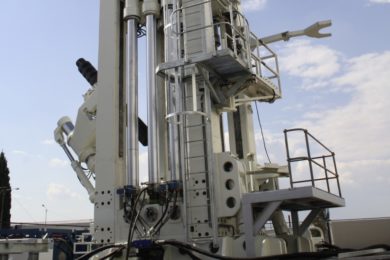Macquarie Coomdities reports NBS coal production data showed raw coal output in China hit 279 Mt in March (3,280 Mt annualised), up 23.8% year-on year (YoY) and 31% month-on-month (MoM). For the first three months as a whole, Chinese raw coal production was up by 28% at 751m.
The strength in output in the year to date mainly reflects production growth from Shanxi province, following industry consolidation that restrained output in 2009. Raw coal production from Shanxi has outpaced growth from other regions since the beginning of 2010, after weakening through much of 2009. In 1Q10, Shanxi raw coal production was up by 37.6% to 158 Mt from 115 Mt for the same period in 2009.
Macquarie says that “despite the strong pickup in Chinese coal output in 1Q10, reported coal inventory at IPPs remains relatively low. Coal stocks historically have fallen at this time of year, although this time the starting position was low following the extreme cold earlier in the year. Stocks are down to 12 days of consumption from a more comfortable level of 15-16 days.
“An emerging factor that will pressure the current levels of stocks is the severe drought weather in west/south China YTD, leading to a much lower hydro power output from the region. Hydro generation has been poor since the start of year. According to the official 1Q10 statistics, Chinese hydro power supply accounted for 9.5% of total Chinese electricity supply compared with 12.4% a year earlier. Thermal coal power output is about 86% of national power output compared with 84.5% a year ago – additional 1.5% growth in thermal coal demand.
“Macquarie assumes that 1,653 Mt of thermal coal will be used by the power sector in 2010 (around 50% of the total coal consumption this year). Therefore, additional 1.5% growth in thermal coal demand in 1Q10 equates to roughly 6 Mt of additional thermal coal demand, which is the equivalent of less than two days of national consumption from the power sector.
Consequently, the situation is under control, with minimal influence on prices thus far. However, if the current drought conditions continue into the start of the summer peak season in electricity demand, pressure on thermal power will intensify, with coal prices potentially rising at much steeper trajectory.
“The government announced that it will start safety inspections on coal mines during April and May, and this could have some impact on coal output over the next few months. This will be especially the case for the projects under construction or coming onstream in the near future. The impact on existing operational mines or on Shanxi should be minimal, given that most of the output from the region is now supported by the larger mining companies rather than small illegal operations running by unqualified miners. We continue to believe that the reported raw production from Shanxi this year could break through 700 Mt annualised, compared with 615 Mt reported in 2009, given the quick restart of the production after the consolidation process.
“While we are yet to receive the March data, it is already clear that Chinese thermal coal imports in Q1 will be very strong. Even if imports fall 50% in March, seaborne imports in Q1 on an annualised basis would be a substantial 113 Mt, compared with the 2009 total of 80 Mt.
“However, while imports have been very strong, it is not readily clear that the current level of pricing will entice Chinese customers to sustain this strength. The price difference between coal delivered from Newcastle and Qinhuangdao into Guangzhou is currently around $20/t. While the persistence of drought could see this situation change quickly, the stagnation of Chinese local prices suggests there is not a significant rush to import extra coal at the present time.
“Of course, this has been the situation for some time and clearly has not undermined prices. On the contrary, they have risen further following Xstrata’s announcement of a settlement of $98/t with a major Japanese IPP. However, there are signs that this high price is not for everyone.
“According to the Tex Report, KOSEP has concluded negotiations with major Australian suppliers for CY10 at $89/t, with other settlements soon to be finalised below $90/t. This divergence appears to be because Korean IPPs are happy to take coal from Richard’s Bay or Colombia, which is currently cheaper on a CIF basis. And, with China potentially in the same position, prices out of Australia could be under pressure after the recent jump.”









